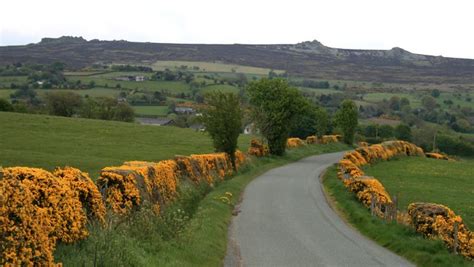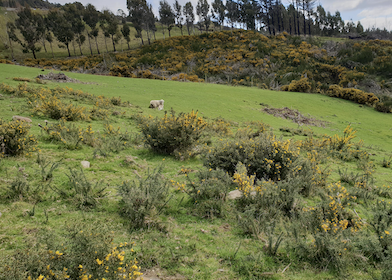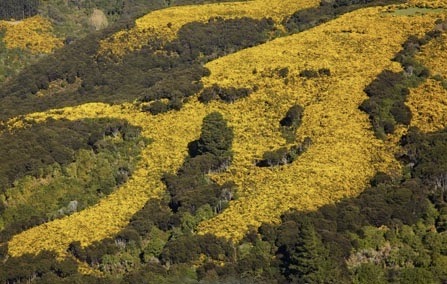|
Kiwi songs - Maori songs - Home In
the 1800s, settlers from Northern Europe cleared New
Zealand's lowland forests and established grass paddocks
in order to produce mutton, beef, butter and wool for
export. To contain the sheep and cows and to give them
shelter from biting winter winds, they planted gorse
hedges. In NZ's hot summers, the gorse seedpods burst,
flinging seeds across the paddocks.....
Gorse in New ZealandIn
the colder climate of northern Europe, gorse (or furze)
made good hedges.
 But
in New Zealand we now have large spreading infestations
over thousands of hectares. The seed can lie dormant on
the ground for up to 50 years, germinating quickly after
the adults have been removed.
 Unfortunately, most methods of removing adult gorse plants, such as burning or bulldozing them, create the ideal conditions for the gorse seeds to germinate and total eradication with current technology seems impossible. Gorse is now one of the most widely spread agricultural weeds in New Zealand, covering 700,000 hectares. Gorse as a nursery plant
|
